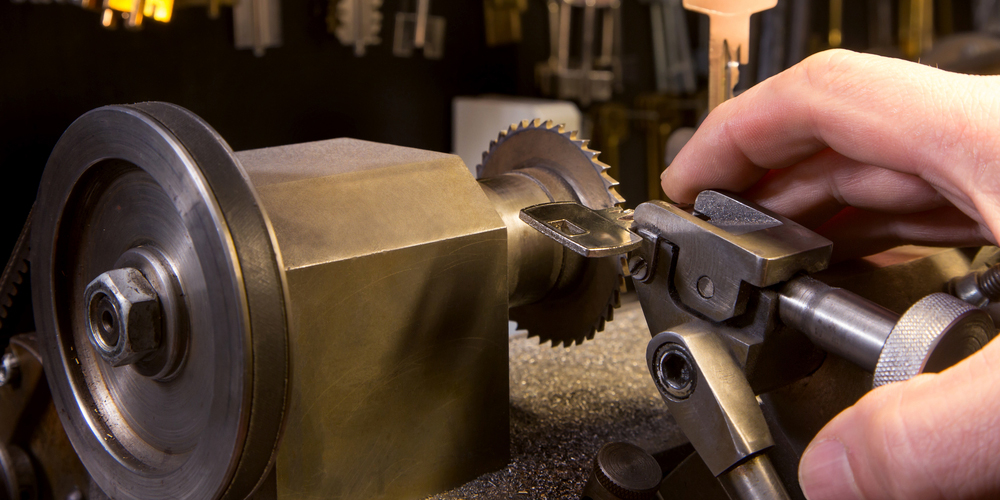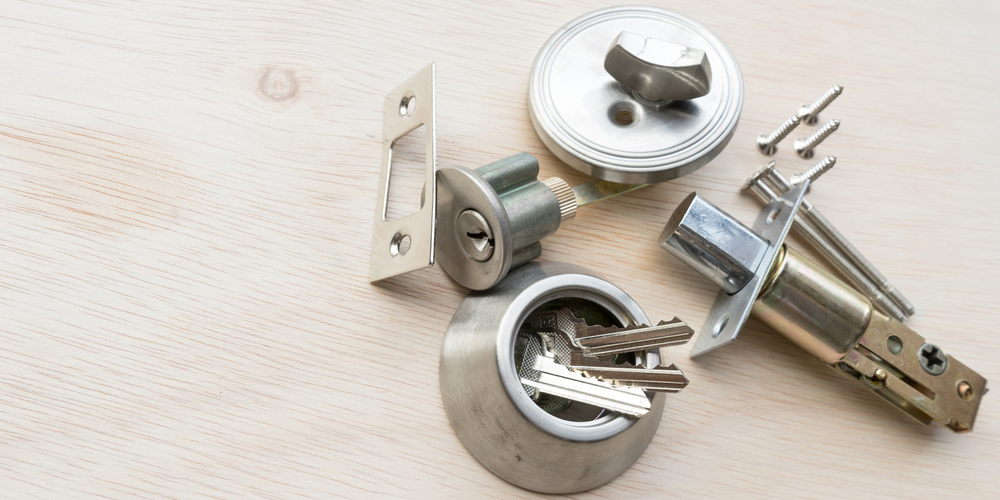Lock Blog
A resource for consumers, locksmiths, and security professionals
A resource for consumers, locksmiths, and security professionals

Can a locksmith make a key from a lock? That’s a very good question, and one that most people do not stop to consider. That is until they need a locksmith and they’re left wondering what they have to do to find one. The simple answer to the question, can a locksmith make a key from a lock, is yes. However, the steps involved in doing this are slightly more complicated, but still feasible if handled by a locksmith. Essentially, they involve understanding why a locksmith would need to make a key from a lock and also understanding the ways in which this can be done.
This question usually arises when someone is in need of an additional key. In most cases, a locksmith will not have to make a key from a lock when they are asked to make a duplicate key, because it is more likely that the original key is still functional and intact. However, when a key is broken or extremely worn down, you will find it hard to make a new key unless you ask a locksmith to make a key from a lock.
Understanding the things that will prompt you to ask ‘can a locksmith make a key from a lock’ are important for several reasons. The main reason is that it will help you avoid placing yourself in a similar predicament once again. Imagine if you were locked out of your home because you didn’t have your key. Would you want to go through that again?
Some people will need to know if a locksmith can make a key from a lock because they have lost their original keys, or broken them in locks. In the case of a car key not working, it may be due to a bad duplication and require a key cut to the original factory code. Each of these scenarios will likely leave you asking the question, can a locksmith make a key from a lock? Once you have a grasp on the ways these scenarios can arise, you will know how to successfully navigate them.
I want to take the time to answer the question that was posed above – can a locksmith make a key from a lock? Before we dive into it, I want to outline the way in which I will approach answering this question. Since there are different keys and different types of locks, there are multiple processes used by a locksmith to make a key from a lock. I will begin by walking through these methods and giving you an overview of what a locksmith needs to carry out each process successfully. Shall we begin?
Cutting the key to code might be the easiest way for a locksmith to make a key from a lock. However, the fact that it is relatively easy does not mean that it’s a feasible solution for every lock type. A key code is a set of characters that is used to make a key for a specific lock. There are primarily two types of key codes that are utilized in fashioning keys. These are the blind code and the bitting code. The one that a locksmith will pay the most attention too, in this scenario, is the bitting code. This is because these are the codes that are used to fashion the actual keys from a key blank.
This process does not always work because a locksmith will not always have access to the key code that they need, especially in the absence of the original key. In most cases, the key code is stamped onto the original key, or in the case of high-security locks, users are given key code cards. With access to the key code, a locksmith can very easily cut you a new lock.
You will often find that the bitting code is not written on the lock, but access to the lock still provides you with a feasible way of tracking the bitting code down. You can use the specific model of the lock to locate the corresponding bitting code. This can be done by reaching out to the retailer or the manufacturer to see if they have any information pertaining to the bitting code. This can only be carried out by licensed locksmiths because most manufacturers will not divulge the bitting codes or related information to anyone else.
There are some locks that do not require any legwork on the part of the locksmith. Like cabinet locks for instance. These locks usually have their key codes stamped into the lock body, so all the locksmith has to do is locate the key code and make the key based on said code. In order for a locksmith to make a key from a lock by means of the key code, they will need to use a code cutter. A code cutter is something that most locksmiths are frequently found using, aside from their lock picks that is.
This tool sometimes makes it possible to make a key from a lock, that is of course once you have the key code available and ready to use. There are multiple code cutters that can be used, but each of them works in way that allows keys to be cut to the general standards of key specifications that are used within the locksmith industry.
The important part of the process involves properly inserting the key blank into the cutter, and also ensuring that the correct code cutter blade is being used. In order to determine which blade to use, locksmiths measure the cut-to-cut dimensions necessary for the lock.

In comparison to cutting a key to code, impressioning a lock is much more direct. In short, impressioning a lock allows a locksmith to make a key from a lock without having to disassemble the entire lock cylinder or rely on decoding the lock. This is often the go-to process for most locksmiths because of how efficient and expedient it can be. Although impressioning might be an efficient process for locksmiths, it is not easy to learn or execute. It requires a lot of practice and fine tuning, similar to practicing lock picking.
On the surface, impressioning a lock appears to be rather simple. The locksmith will insert the appropriate key blank into the lock and then turn the blank key, so as to bind the pins within the lock cylinder. It is crucial that the pins are binding because this will help you mark out the sections that need to be filed down on your key blank. Since there are multiple pins within a lock, there will have to be multiple cuts made on the key blank. Therefore, the locksmith will generally repeat the cycle moving the key blank in, and out, of the lock several times. Once all the necessary marks have been made, the locksmith will file the key blank down to fashion a working key.
As I said, this process will need to be repeated several times for the best results. It requires multiple trial runs to ensure that the markings are accurately made, and that the filing is done in such a way that enables the new key to raise the pins to the shear line and work the lock. The most commonly used methods to derive the necessary markings on a key blank are pulling, tapping, and wiggling.
Once you begin to dive deeper into impressioning, things begin to get a little complicated, which is why many locksmiths say that practice is key to fine tuning this skill. The locksmith will have to ensure that they have assembled the necessary tools to properly execute the job and impression the lock. These tools mainly consist of the appropriate key blank, a file, and a vice grip.
The key blank is probably the most important tool in this process, and choosing the right one is a major determining factor in whether you successfully impression the lock or not. Locksmiths usually have an array of key blanks to choose from. These include steel blanks, aluminum blanks, and brass blanks. However, not all of these blanks are suited to the process of impressioning. The reason is that, at its core, impressioning requires the application of force. Which means that you should choose a key blank that is resilient, but not too strong to be filed down.
Aluminum key blanks are prone to wear and crack easily under pressure, whereas steel blanks are extremely tough and durable which makes them harder to file down. Also, steel blanks are not exactly easy to come by. Ideally, a brass key blank should be used when a locksmith wants to make a key from a lock. With a brass, a locksmith will easily spot the marks that are made on the key blank when the keys are binding, and they will be able to file these marks down much easier. Essentially, choosing a brass key blank makes it easier for locksmiths to make keys from a lock.
To a locksmith, the file is just important as the key blank in this process, because it makes it far easier for a locksmith to make a key from a lock. Typically, a locksmith will choose from (or use both) a 6 inch Swiss #4 cut round file or a pippin file. Swiss pattern files connote files that are used to make precision cuts, which is the ideal file for the process of making a key from a lock.
Some locksmiths might opt to use other files than the ones specified here, but these are probably the most ideal because their features make impressioning a breeze. For instance, the Pippin file is best used to shape the cuts in the key blank because it has a rounded section as well as a flat section that can be utilized.
As I pointed out, tension has a huge role to play when a locksmith is attempting to make a key from a lock. As with most of the procedures that a locksmith has to carry out, impressioning requires a fine balance, so it is important to make sure that just the right amount of pressure is applied. Too little will not yield effective results, and too much will potentially damage the key blank and the lock that is being impressioned.
The worst case scenario will leave the key blank broken off in the lock. The use of a small vice grip makes this much easier to accomplish. Ideally, it should be used to hold the key blank in place, and also used as a mechanism for applying the necessary amount of tension.

Disassembling the lock is usually carried out when you cannot cut the key to code, or if you are unsuccessful in your attempt to impression the lock. Locksmiths will usually disassemble the entire lock cylinder to try and reverse engineer the bitting for the key from the alignment and height of the pins within the lock cylinder.
Disassembling the lock is a much harder process for locksmiths to carry out as compared to impressioning the key. However, as I pointed out above, it is not always possible to successfully impression a key and have it work the way it is supposed to, which is why some locksmiths often have to resort to disassembling the lock.
It is important for the lock to be disassembled in a non-destructive way, to ensure that none of the internal mechanisms within the lock cylinder are damaged or thrown out of alignment. Non-destructive entry methods are often used by forensic locksmiths to analyze locks. When dealing with a pin-tumbler lock, locksmiths have to remove the lock from the door it is fitted to in order properly disassemble it.
Due to the absence of an original working key, locksmiths will most likely have to pick the lock in order to properly disassemble it. The purpose of disassembling the lock is to gain access to the pins housed within the cylinder. This will allow a locksmith to take direct measurements of the internal components and pins within the lock cylinder, which allows the locksmith to make a working key from the lock.
Key Takeaways
Can a locksmith make a key from a lock? Yes, they can! I hope that the article above has shown you the ways in which this question can be answered, while also exploring some of the limitations that might be faced in a scenario like this. I should point out that you should avoid trying to carry out any these solutions on your own, so that you do not inflict any unwanted damage on your lock. Try not to scratch the DIY itch and allow a locksmith to help you make a key from a lock instead.
Category: Automotive, Car Keys, Commercial, Residential